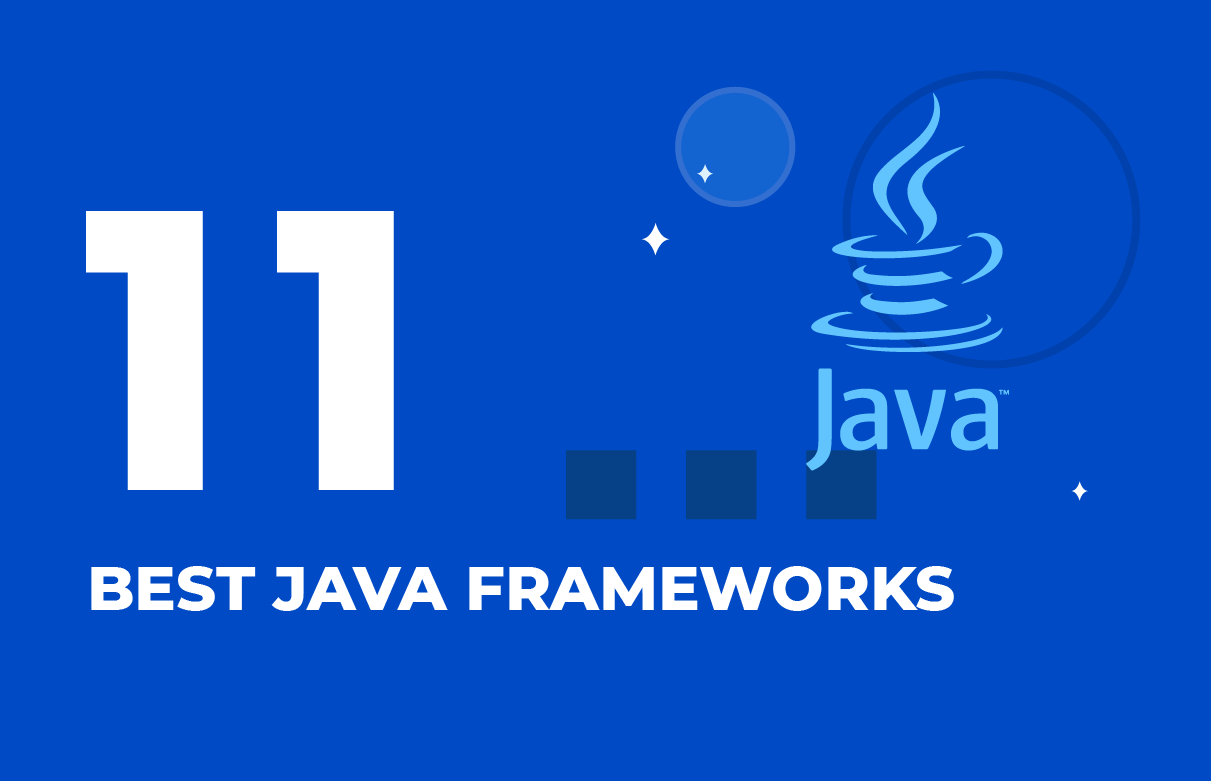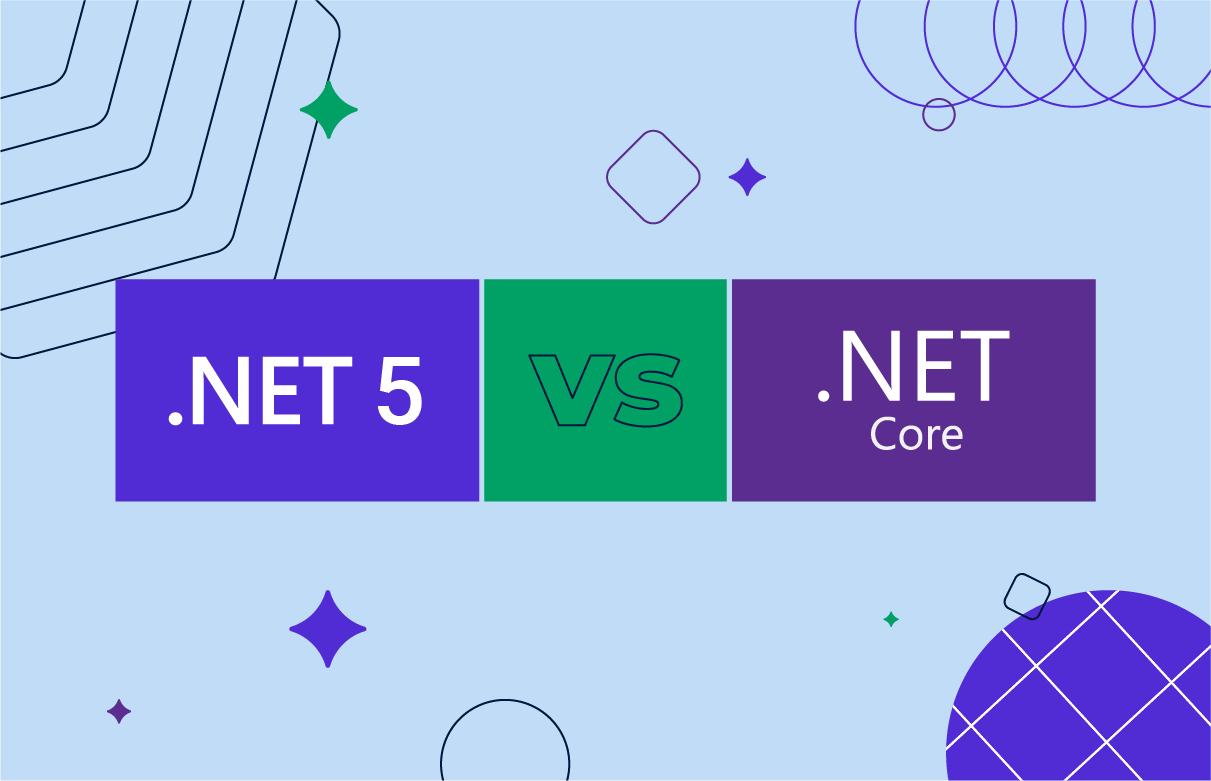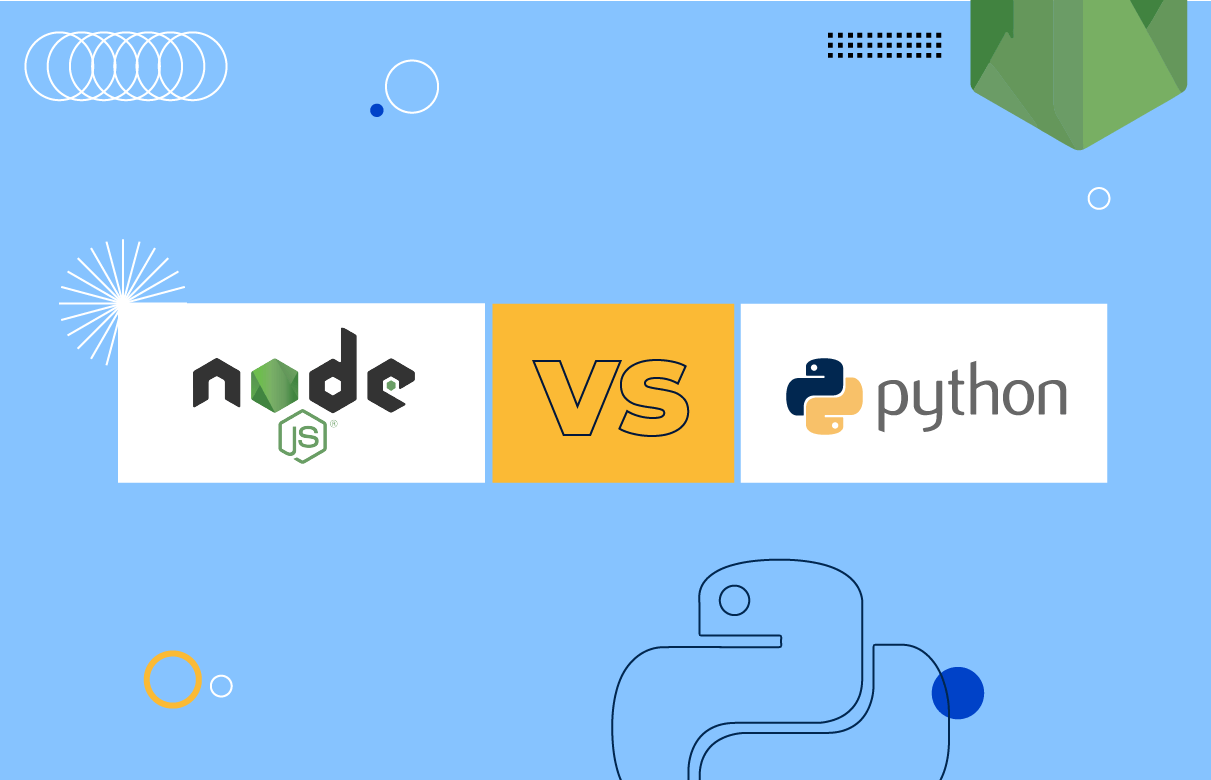Shifting from a monolith architecture to microservices has become the new normal in the realm of software development. This is especially true for complex systems with numerous integrations. According to Statista’s survey, nearly 85% of respondents from large organizations (over 5,000 employees) are currently utilizing microservices.
An interesting fact is that most developers choose Java as a programming language for building microservice-based applications.
This article takes a closer look at the benefits and challenges of a microservices approach for modern businesses, and explores the popularity of Java in this domain. You’ll also find a step-by-step guide on designing microservices in Java and a list of frameworks and libraries you can use.
What Is a Microservices Architecture, and Why Abandon a Monolith?
Microservices are an advanced architectural and organizational approach to software development. With this architecture, applications are broken down into smaller, independently deployable services that communicate with each other through APIs. Such services can be created and maintained by small, self-contained teams. This lightweight approach contrasts with the traditional centralized monolithic architecture, where an entire application is built as a single, tightly integrated unit.

The decision to abandon a monolith in favor of microservices stems from several pitfalls of the former:
- Challenging updates and troubleshooting. Imagine you need to add a new feature or fix an issue in your monolithic application. Since a monolith implies a single codebase with interconnected components, making changes without affecting the entire system is difficult. As a result, even a tiny modification might require rebuilding and redeploying the whole application, and you would risk facing unintended consequences or disruptions.
- Unplanned downtime. Monoliths are susceptible to mass failures, meaning that one problem in a single aspect of business logic can lead to a complete halt of the entire application. As a rule, unexpected and long downtime leads to a significant increase in customer churn and lost revenues.
- Poor user experience. A monolithic application, as it grows and becomes more complicated, suffers from slower response times and reduced scalability, especially during peak usage times. This results from the fact that the entire application must scale as a unit, regardless of which specific functionalities are experiencing higher demand. Thus, end users suffer from subpar app performance and are more inclined to switch to competitors.
While the transition to microservices brings its own set of challenges (which will be discussed later in this article), the benefits of improved scalability, faster development cycles, and more efficient resource utilization have led many organizations to embrace this architecture. As technology continues to evolve, the shift from monolith to microservices exemplifies a strategic move toward a more adaptable software ecosystem.
Microservices Market Overview
The market for microservices has witnessed remarkable growth in recent years, reflecting the advantages in addressing the limitations of traditional monolithic architectures.
- According to the survey by Statista, 40% of respondents currently using microservices emphasize its utmost significance in the context of organizational operations.
- IBM revealed that 78% of current users express their intention to increase the financial, temporal, or labor investments in microservices.
- Projections for the cloud microservices market indicate substantial growth, with its value anticipated to surge from $1.33 billion in 2023 to an estimated $3.72 billion by 2028, at a steady compound annual growth rate (CAGR) of 22.88% during the forecast period.
Core Concepts of a Microservices Architecture
Decoupling
In microservices, an application is composed of individual components, each responsible for a specific piece of functionality. These components (aka services) are loosely coupled, meaning they operate independently and communicate through well-defined interfaces. Decoupling allows for flexibility in development and deployment, making it easier to modify and scale individual services without affecting the entire application.
Communication patterns
Microservices communicate with each other through various patterns, including:
- RESTful APIs – These leverage HTTP for simple and stateless communication.
- RPC (Remote Procedure Call) – This method involves invoking methods on remote services, often using protocols like gRPC.
- Messaging – This pattern involves asynchronous communication using message queues or publish-subscribe systems like RabbitMQ or Kafka.
To ensure the interaction of a microservices-based system with external clients (mobile apps, web browsers, etc.), the API Gateway pattern is used. It’s a centralized service that acts as a single entry point for clients. Here how it works:
- Instead of clients directly calling different services, they make requests to the API Gateway.
- The API Gateway determines where to route client requests. It can direct requests to the appropriate microservice based on factors like the request URL. It also ensures even distribution of the workload among multiple instances of a microservice to optimize performance.
- Handling security is another vital role of the API Gateway. It can authenticate clients, ensuring that they possess the necessary permissions to access specific services.
- Additionally, the API Gateway can cache responses to frequently requested data, reducing the burden on microservices and accelerating response times.
- The response aggregation functionality allows for the merging of responses from several services into one, which is particularly useful when a client needs data from multiple sources to fulfill a request.
Data management and persistence
Each microservice manages its own data and database, typically adhering to a specific database technology. This autonomy ensures that services can use the most suitable data storage solution for their needs. Data consistency between services is maintained through well-defined APIs and eventual consistency mechanisms.
Scalability and Load balancing
The overall system scalability is improved due to the capability of each microservice to scale up and down independently. Load balancing, in turn, efficiently spreads incoming requests across various service instances, optimizing the use of resources and boosting system performance.
Fault tolerance and resilience
Engineered with robustness in mind, microservices exhibit remarkable resilience against failures. Employing techniques such as circuit breakers, retries, and graceful degradation, they can continue functioning even when certain services experience disruptions. Fault tolerance is further bolstered through the implementation of redundancy and failover strategies.
Security considerations
An essential facet of guaranteeing security within microservices is the protection against unauthorized access. To accomplish this, specialists employ identity and access management (IAM) solutions rooted in established standards for user authentication, such as SAML, WS-Fed, or the OpenID Connect/OAuth2 frameworks. Secure communication channels (e.g., HTTPS) and data encryption protect data in transit. In addition, security measures should encompass the implementation of multifactor authentication (MFA).
Benefits of Adopting Microservices
Microservices are being used in various types of software solutions, including data analytics and business intelligence apps, database apps, CRMs, commerce apps, customer service apps, finance apps, and HR apps.
The integration of microservices into these digital platforms is far from arbitrary; they reap a range of business benefits:
Greater flexibility
Since an application is divided into small, self-contained services that operate independently, you can modify, enhance, or scale such individual components without disrupting the entire system. This modularity allows for efficient resource management and makes it easier to adapt to changing business requirements.
Whether you need to meet increased user demand or optimize resources during quieter periods, microservices provide the flexibility to scale specific services as needed.
Improved app performance
Microservices introduce a robust fault isolation mechanism: if one service encounters issues, it doesn’t cascade into a system-wide failure. Isolated failures can be addressed swiftly, maintaining overall application stability and preventing downtime.
Moreover, the scalability and resource elasticity within microservices ensure your application always delivers peak performance without incurring unnecessary costs.
Accelerated time-to-market
Microservices enable a streamlined continuous integration and continuous delivery (CI/CD) pipeline. This means you can deploy updates or introduce new features more frequently and efficiently, reducing time-to-market. As a result, businesses respond to market changes, address customer demands, and seize opportunities promptly.
Improved team productivity
With microservices, your development teams can work in parallel on different components. This parallelization accelerates development and deployment, making the most of your team’s capabilities. Additionally, teams can focus on specialized skills, leading to improved code quality and faster development cycles.
Higher customer satisfaction
The improved fault isolation, faster updates, and enhanced performance offered by microservices translate into a better user experience. Customers will appreciate the reliability and responsiveness of your application, leading to higher satisfaction and increased loyalty.
Challenges of Adopting Microservices
As your company explores the vast potential of microservices, it’s crucial to understand the challenges that come with this paradigm shift. Here, we outline some of the most prominent obstacles you may encounter:
Lack of experienced talent
Building a team of seasoned microservices experts can be a daunting task. The demand for such talent often exceeds the supply, making experienced professionals a costly investment. It’s essential to secure individuals who have expertise with Kubernetes, containerization, or Dockerization, as these skills are fundamental to the effective implementation of microservices.
Lack of infrastructure
Transitioning to microservices may require a modern infrastructure that can support the unique demands of this architecture. Not all companies have the resources or capabilities to make this infrastructure shift. This challenge can lead to additional costs and complexities when upgrading your existing technology stack.
Distributed system complexity
Microservices are inherently distributed, resulting in a complex web of interconnected services. Managing these services and ensuring they work harmoniously can be challenging. Keeping track of dependencies, versioning, and service discovery becomes a critical concern.
Data consistency and integrity
As data is distributed across various services, ensuring consistency and integrity can be complex. Data synchronization, transaction management, and data validation must be carefully orchestrated to prevent inconsistencies or data corruption.
Service communication and latency
Microservices rely on frequent inter-service communication. While this is essential for modularity, it can introduce latency and communication overhead. Optimizing this communication while maintaining responsiveness is a delicate balance.
Managing microservices orchestration
Orchestrating microservices can be challenging, especially when dealing with long-running processes, complex workflows, or service failures. Tools and practices for service coordination, such as service meshes and workflow engines, are necessary but add another layer of complexity.
Organizational and cultural shifts
Transitioning to microservices often requires a cultural shift within your organization. Teams must adapt to new development, deployment, and operational practices. Resistance to change, legacy processes, and organizational silos can hinder a smooth transition.
While microservices-based development is notably demanding and resource-intensive, the potential benefits for a business can make it entirely worthwhile.
Why Is Java Popular for Microservices Development?
According to Statista’s research findings, Java stands as the primary language employed by developers when it comes to constructing microservices. Java is favored by 34% of the survey participants, while Python is the choice of 14%, and Go is the preference of 12%.

Let’s explore why the majority of specialists prefer developing the architecture of microservices in Java.
Platform independence and portability
The language is favored for microservices development due to its platform independence. Java code can run on various platforms without modification, making it highly portable. This means that microservices written in Java can be deployed on different operating systems and cloud environments, providing flexibility and reducing vendor lock-in.
Robust and reliable performance
Java offers strong memory management, garbage collection, and efficient multithreading capabilities. This reliability ensures that the microservices architecture in Java can handle high workloads and maintain stable performance, crucial for applications that demand consistency.
Strong and versatile microservice-based Java libraries and frameworks
- Spring Boot – simplifies microservices development with features like embedded servers and a wide range of modules for building robust applications.
- Micronaut – a lightweight and highly performant framework designed for building microservices with minimal startup time and low memory footprint.
- Quarkus – known for its ability to create container-native microservices with fast startup times, making it an excellent choice for cloud-native applications.
- Dropwizard – provides a set of reliable, battle-tested libraries for building production-ready microservices quickly.
- Vert.x – an event-driven, non-blocking framework that excels in building reactive and scalable microservices.
Enterprise-grade security features
Java’s security features are well-established and trusted by enterprises. It offers various mechanisms and libraries to protect microservices from threats, making it a preferred choice for applications that prioritize data security and compliance.
Mature ecosystem and community support
With a vast collection of frameworks, libraries, tools, and components, as well as extensive community support, Java developers have access to a wealth of resources, documentation, and a network of experts. Whatever issue you may encounter when developing microservices, you can rest assured that you’ll address it quickly by leveraging the collective knowledge.
Designing Microservices in Java: a Step-by-Step Guide
If you’re working with a bulky Java-based monolithic application and aiming for enhanced efficiency, transitioning to a microservices architecture is a promising solution. Here’s a comprehensive guide to help you through the process:
When transitioning from a monolithic application to microservices Java architecture, the first step is to break down the monolith into smaller, self-contained services.
- Identify distinct functionalities or business processes within the monolith that can become independent services.
- Consider using modular programming and containerization. Java Platform Module System (JPMS) allows you to encapsulate code and dependencies into distinct modules. Additionally, containerization technologies like Docker and Kubernetes enable you to package microservices along with their dependencies for seamless deployment and scaling.
Clearly define the boundaries of each microservice to ensure they are self-contained. Establish API contracts and communication mechanisms between services.
- Leverage Java’s compatibility with RESTful APIs (using libraries like Spring Boot or JAX-RS), message queues, or gRPC to define these boundaries effectively.
- Utilize messaging protocols, such as Apache Kafka or RabbitMQ, for asynchronous communication between independent units.
- Swagger or OpenAPI specifications can assist in documenting and maintaining API contracts.
Striking the right balance in terms of service size is crucial. Microservices should be small enough to be manageable but substantial enough to provide meaningful functionality. Java’s modular architecture and containerization can aid in creating services of appropriate size.
When determining the ideal service size, consider Java’s support for building lightweight microservices using frameworks like Spring Boot, Micronaut, or Quarkus. These frameworks enable you to create small, self-contained services that can be deployed independently. Microservices can be packaged as executable JAR files, further enhancing their modularity.
Define the responsibilities of each microservice. Ensure that they have a clear purpose and fulfill a specific business function. This clarity will help in developing and maintaining the services effectively.
Leveraging domain-driven design (DDD) principles can also guide you in structuring services according to their specific business functions.
Consider how data will be managed within microservices. It’s a common practice to have a separate database per service. Java’s ecosystem offers a variety of database libraries and ORMs for efficient data management. Ensure that each service has control over its own data and can interact with other services through well-defined APIs.
To ensure data integrity and manage distributed transactions in Java, you can employ distributed transaction managers such as Atomikos or Narayana. Additionally, by leveraging frameworks like Spring Cloud Stream or Apache Kafka, you can implement event-driven architectures that streamline this process. Java’s capability to handle asynchronous communication via messaging systems allows you to separate transactional logic from microservices, guaranteeing data consistency and resilience to failures.
Real-Life Examples of Microservice-Based Projects
Several global companies opted to transition from monolithic architectures to cloud-based microservices due to various challenges they encountered. Some notable examples include:
- Netflix
- Uber
- Amazon
- Etsy
These examples showcase the versatility of microservices in powering large-scale, complex applications across various industries, ensuring scalability, agility, and robust performance.
Why Choose SaM Solutions to Build Microservices in Java?
When you choose SaM Solutions to implement your software idea, you are tapping into the expertise of professionals with decades of experience in Java development. With hundreds of successful projects and a profound understanding of microservices, our team is well-equipped to navigate the complexities of modern software architecture.
Whether you’re looking to transition from a monolithic structure to microservices or optimize your existing microservices ecosystem, SaM Solutions combines Java proficiency with a proven track record to deliver efficient, scalable, and cutting-edge solutions that align with your business goals. Trust in our experience and knowledge to lead you toward a future of agile, responsive, and high-performing microservices.




























 5 Reasons Why Your Business Needs a Mobile eCommerce Application
5 Reasons Why Your Business Needs a Mobile eCommerce Application Using Salesforce to Improve Your Sales Pipeline: Five Tips
Using Salesforce to Improve Your Sales Pipeline: Five Tips Cross-Platform Mobile Development: Five Best Frameworks
Cross-Platform Mobile Development: Five Best Frameworks 10 Best Web Development Frameworks in 2024
10 Best Web Development Frameworks in 2024 How to Develop Custom Accounting Software
How to Develop Custom Accounting Software






![[Tech Talk] What Developers Should Know About SQL Optimization, Part 1: Fundamentals](https://www.sam-solutions.com/blog/wp-content/uploads/fly-images/30279/SQL-video-cover-370x238.webp)






 Why React and Node.js Are the Top Technologies for Creating High-Performance Web Apps in 2024
Why React and Node.js Are the Top Technologies for Creating High-Performance Web Apps in 2024 10 Best IoT Platforms for 2024
10 Best IoT Platforms for 2024 Top 20 Latest Trends in the Ecommerce Industry in 2024
Top 20 Latest Trends in the Ecommerce Industry in 2024 Top 10 Most Popular Programming Languages in 2024
Top 10 Most Popular Programming Languages in 2024
Great job on this guide! There is highly useful information for those looking to optimize their monolithic architecture and considering Java as the main tool for this purpose.
I appreciate the information you share with us in this guide. It’s a must-read for anyone diving into microservices with Java.
The article breaks down microservices in Java beautifully. It’s perfect for both beginners and experienced developers looking to master this architectural pattern.
I agree that Java is a great option for developing microservices. This article is highly informative. It’s a great resource for understanding microservices and how they can be implemented effectively with Java.
Thanks for sharing! This guide clearly explains why people build microservices in Java. This architecture is a true gem for many business projects, so microservices experts are highly demanded.